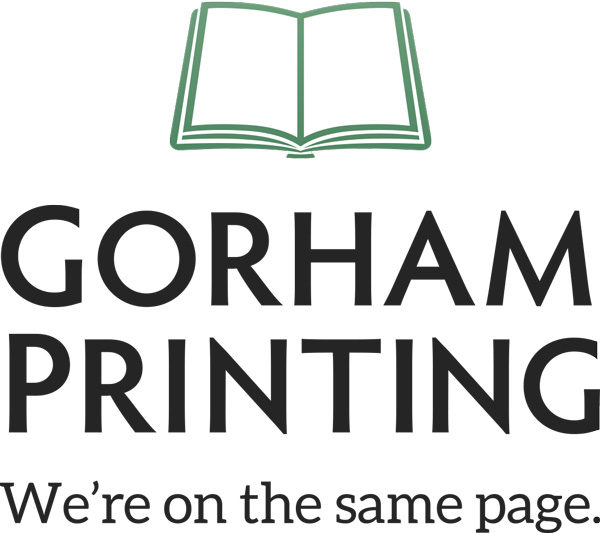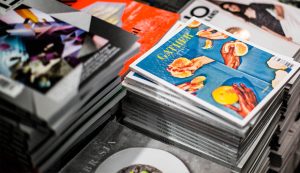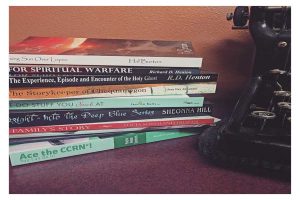When you look at a shelf of books, what sizes seem consistent, what size stands out? When you imagine your book in your hands, what trim size is it? Industry book standards such as 5.5 x 8.5” and 6 x 9” are not arbitrary numbers. Research was done to find the best use of parent sheets of paper to create minimum waste during production. A square book size of 6 x 6” will print in a 6×9” format with special cuts, creating additional wasted paper.
 Books can be printed in a number of ways: sheet fed offset, roll fed offset, and many different varieties of digital printing. The method of production is typically based on the quantities needed for that order. Digital sheet fed printing is most often used for shorter runs of twenty-five copies even up to 2000 with today’s equipment. Sheet feed offset usually takes over for higher quantities and for long-run print runs to keep the cost per book down. Roll fed offset is the most cost effective.
Books can be printed in a number of ways: sheet fed offset, roll fed offset, and many different varieties of digital printing. The method of production is typically based on the quantities needed for that order. Digital sheet fed printing is most often used for shorter runs of twenty-five copies even up to 2000 with today’s equipment. Sheet feed offset usually takes over for higher quantities and for long-run print runs to keep the cost per book down. Roll fed offset is the most cost effective.
For this discussion let’s use the scenario of a 500-book order, printed digitally, sheet fed. For most printers, paper is bought by skids in what is known as parent size. Two common parent sizes are 25 x 38” and 23 x 35.” If your book is 5.5 x 8.5”, it would likely be printed on stock that started as 23 x 35.” If the book is 6 x 9,” it would most likely be printed from 25 x 38.” These sizes give you the best cut out of the parent sheets with the least amount of waste and still allow for finish trimming.
So what if your desired size is 6 x 8”? It would be printed from the 25 x 38” parent size which means the 6 x 9” paper expense as well as the possibility for additional charges for a non standard size. Any trim size larger than 5.5 x 8.5” would be printed on the larger parent sheet. Book trimming is typically done with a 3-knife trimmer, cleanly cutting all three sides of the book for the finished trim. With non-standard book sizes, some book printers may not be able to use their 3-knife cutter and would charge for the specialty cuts.
That might not be the case if your book is printed on different equipment or the bindery is able to adjust to a non standard size without time loss. Check with your book printer before you do the final page layout to find the most cost effective approach for the production of your book.




